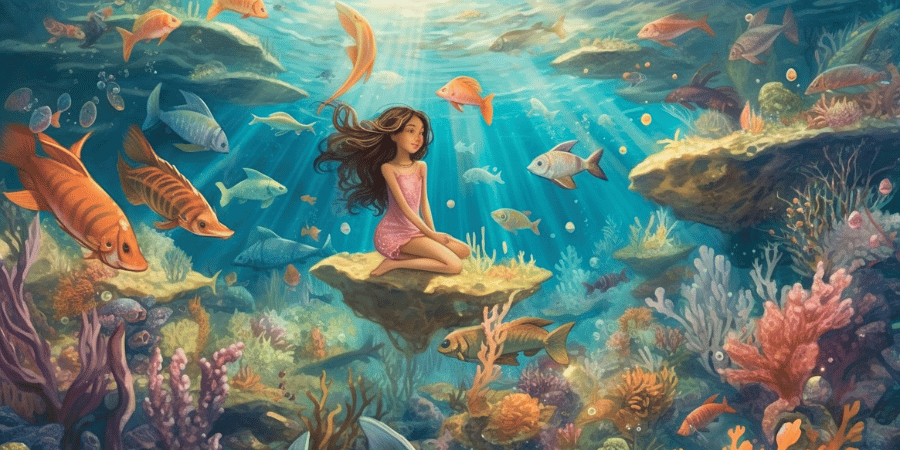
So, you have a fantastic idea for a children’s book, but there’s one problem: you can’t draw. Don’t worry, we’ve got you covered. In this article, we will guide you through the process of illustrating a children’s book without the need for any artistic skills. We’ll explore various techniques, resources, and tips to help you bring your story to life.
In today’s digital age, there are numerous tools and software that can help you create eye-catching illustrations even if you can’t draw. Some popular options include:
Programs like Adobe Illustrator, Inkscape, and Affinity Designer allow you to create vector-based illustrations. The advantage of vector graphics is that they can be resized without losing quality, making them ideal for children’s books.
Tools like Procreate, Adobe Fresco, and Krita are designed for digital painting, allowing you to simulate traditional painting techniques with the added benefit of digital features. You can experiment with various brushes, textures, and colors to achieve the desired look.
Adobe Photoshop and GIMP are popular choices for photo manipulation. These programs allow you to edit photos, create collages, and even paint digitally, providing endless possibilities for unique illustrations.
Stock illustrations and images are pre-created artworks that you can purchase or download for free, depending on the licensing terms. These resources can save you time and effort, as well as provide inspiration for your book’s visual style. Some popular platforms for finding stock illustrations and images include:
Remember to always check the licensing terms and give appropriate credit to the artist when using stock images.
Working with a professional illustrator is a great option if you want high-quality illustrations tailored to your story. To find the perfect illustrator, you can:
Platforms like Behance, Dribbble, and ArtStation showcase the work of talented illustrators. Browse through their portfolios to find an artist whose style aligns with your vision.
Post your project on platforms like Upwork, Freelancer, or Fiverr, and receive proposals from various artists. This way, you can compare their work and pricing to choose the best fit.
Join social media groups, forums, or attend events related to children’s books and illustration. Networking with illustrators can help you find the right artist for your project and build lasting professional relationships.
Traditional drawing skills aren’t the only way to create visually appealing children’s books. Consider experimenting with alternative illustration styles, such as:
Collages can be made using a mix of materials, such as photographs, textured paper, and fabric. This technique allows you to create unique and engaging illustrations without drawing.
Paper cutout illustrations involve cutting and arranging pieces of paper to create images. This method can result in charming and tactile visuals that capture the attention of young readers.
Typography-based illustrations use letters, words, and fonts as the primary visual elements. By playing with size, color, and arrangement, you can create captivating images that also support your story’s text.
Using photographs as illustrations can provide a unique and realistic look for your children’s book. You can either take the photos yourself or use stock images, then edit and enhance them using photo manipulation software.
Even if you’re not a naturally gifted artist, learning some basic drawing techniques can go a long way in improving your illustrations. You can:
With consistent practice and patience, you might be surprised at how much progress you can make in your drawing abilities.
No, using copyrighted characters or images without permission is illegal and can result in legal repercussions. Always create original content or use resources with appropriate licensing for your illustrations.
The cost of hiring an illustrator varies depending on factors such as experience, style, and the number of illustrations needed. Rates can range from a few hundred to several thousand dollars. It’s essential to discuss your budget and project requirements with potential illustrators before hiring them.
The timeframe for illustrating a children’s book depends on the complexity of the artwork, the number of illustrations, and the illustrator’s availability. It can take anywhere from a few weeks to several months. Make sure to plan your project timeline accordingly and communicate your expectations with your illustrator or other collaborators.
Illustrations for printed children’s books should typically be created at 300 DPI (dots per inch) and be sized to fit the dimensions of the final printed book. Consult with your publisher or printer for specific requirements and guidelines.
Yes, you can use a mix of illustration styles in your children’s book. However, it’s important to maintain visual consistency and ensure that the various styles complement each other and the story’s tone.
In conclusion, illustrating a children’s book without drawing skills is entirely possible. By exploring digital tools, using stock images, collaborating with an illustrator, experimenting with alternative styles, and learning basic drawing techniques, you can create a visually engaging book that young readers will love. Remember to stay creative, be patient, and enjoy the process of bringing your story to life.
